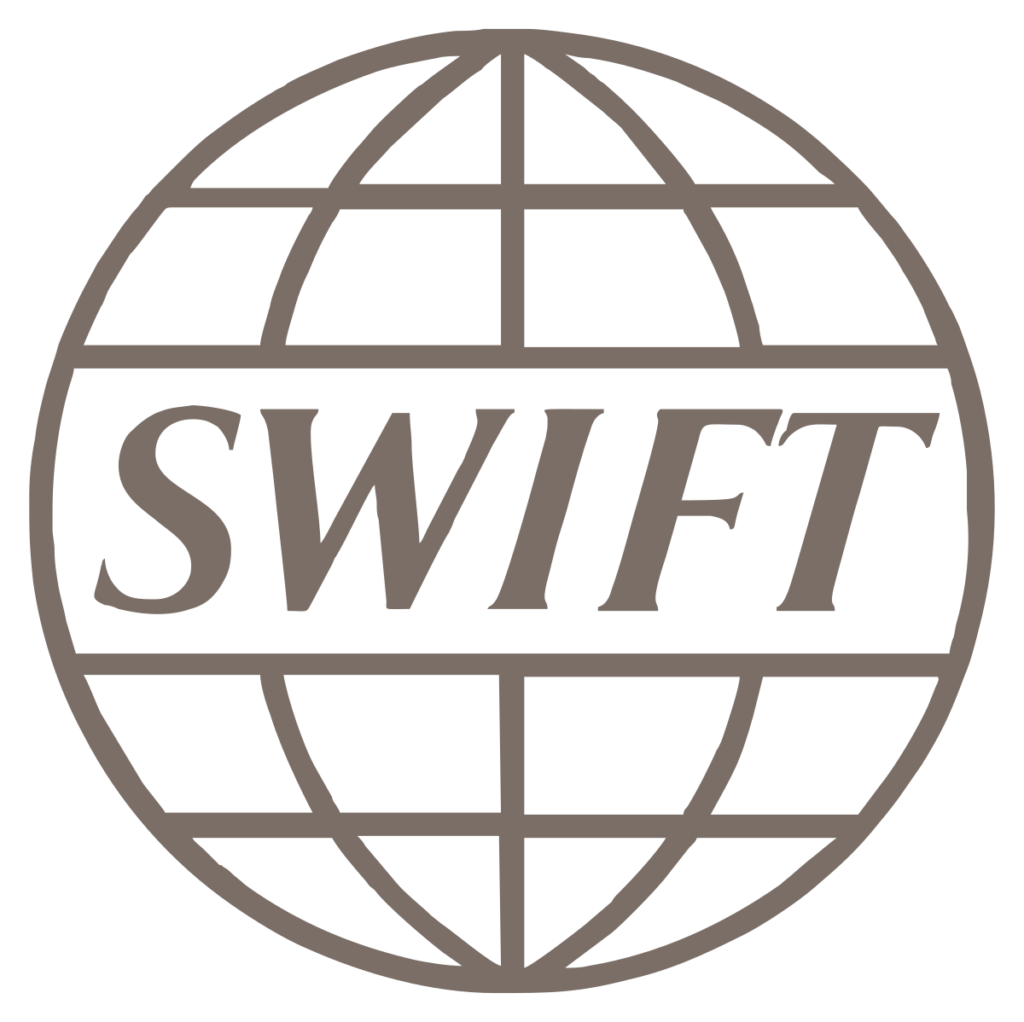

SWIFT is of great importance in the financial industry and serves the noble purpose of bringing together various organizations worldwide. Let’s explore deeper and learn more about the SWIFT payment system and its effectiveness.
What is SWIFT in the banking system?
The Society for Worldwide Interbank Financial Telecommunications is the full form of SWIFT. It is at the heart of most international money and security transfers. SWIFT is a network that provides the banking sector and other financial institutions with a secure communication system and protocols.

The meaning of SWIFT in the banking system
SWIFT tells all about its meaning, especially in the banking sector. SWIFT is a system that allows financial institutions and banks all over the world to convey information to each other in not only a quick but accurate and secure manner.
Inside a SWIFT transaction
Probably, you thought that SWIFT is a financial institution or maybe a specific entity that holds or transfers money or other financial assets, but not really. It is a system that allows smooth communication between and among partners or members on financial transactions.
SWIFT uses standardised keys to transmit information to the necessary members. Each financial institution has a unique code (BIC or bank identifier). Usually, it consists of eight characters but may consist of eleven.
Deciphering the full form of the SWIFT code in the banking system:
- The first four symbols are the bank or institute code.
- The following two symbols are the country code.
- The next two symbols are the location/city code.
- The last three symbols are usually used to assign codes to individual branches of a bank or organization.
Note! BIC is used to identify your bank when making an international money transfer. IBAN identifies your bank account used in a bank connected to SWIFT.
Let us briefly see what SWIFT does. The bank sending a payment order processes the payment details, and those of the sender and the recipient then sends them to the receiving bank through the SWIFT system. SWIFT then checks if the information comes from a valid (registered) user. If the data is correct, they will successfully reach the recipient bank.
If the transaction has any issues, the recipient bank may hold the order until the banks involved solve the case. It means that SWIFT may not have anything to do with this since its only work is to check the message’s validity and indicate that the sender’s bank has sent the order.
That’s only one of the numerous transactions SWIFT can offer. SWIFT also manages payment orders for treasury markets and other public statements, like those from industries and syndications, and payment orders to individual and private accounts.

The world before SWIFT
Long before the introduction of SWIFT, Telex was used as the main system of transmitting financial messages during global interbank transfers. But the system had several issues that caused concerns, including insecurity, unreliability, and error rates. The system required the exchange of over ten Telex messages during a cross-border transaction. Of course, this meant lots of costs incurred consumed during the process.
Authentication procedures were also necessary to ensure that the funds transferred had a higher level of security. This process was quite complex, which meant high labour intensity was needed. Besides, Telex messages were sent as free text, allowing users to send payment instructions in various formats, further complicating matters.
So, the SWIFT system was created in the early 1970s to get around these problems. A cooperative, non-profit organisation comprised of six major international banks was established to run a global network that would securely and promptly send financial messages.
Why is SWIFT dominant?
When SWIFT was introduced, it faced lots of challenges. The system’s network became stable with time, causing more traffic since more countries began participating.
By the beginning of 1979, the SWIFT network was transacting over 120,000 messages per day. The quest for communication technologies and working network solutions was taking place and it was evident that SWIFT delivered exactly that which was benefiting its members.
Some advantages SWIFT early members enjoyed included quick messaging, higher volumes, reduced costs, secure transactions, and standardisation. By now, SWIFT membership has increased to over 11,000 and serves over 200 countries.
It has also improved and increased its services, including messages in different transaction arrays such as trade, security, treasury, and system transactions. SWIFT’s continuous improvement and innovation have made it retain its dominance in the market, even though other systems, such as Ripple and Fedwire, offer the same services.
Who uses SWIFT?
The original intention of creating SWIFT was to facilitate efficient communication in treasury transactions and other related corresponding transactions only. However, the messaging format was robust, allowing massive scalability.
Now SWIFT has extended its services to more institutions:
- Banks and non-bank financial institutions.
- Brokerage institutes.
- Trading houses.
- Clearing systems.
- Money brokers and security dealers.
- Corporates.
- Participants and service providers in the Treasury market.
- Asset management companies.
- Depositories.
- Local and foreign exchanges.
- Individuals or entities.
SWIFT services
SWIFT offers several services to its users.
1. Software and messaging services
SWIFT provides a variety of integration and messaging management solutions to meet the needs of the world’s largest financial institutions, small banks, and corporations. These solutions meet users’ complete financial messaging requirements and include storage, formatting, translation and conversion, automation, archiving, and repair capabilities.
2. Application services
SWIFT members or users can access various applications related to its services. Some of them include:
- Real-time instructions to Forex and Treasury transactions.
- Banking market infrastructure to process payments taking place between different banks.
- Securities market infrastructure for processing instructions for clearing and settling payments, securities, foreign exchange, and derivatives transactions.
3. Business intelligence services
SWIFT collects comprehensive and detailed macroeconomic information through messaging traffic data. At the same time, SWIFT evaluates economic indicators in real-time, measuring traffic volumes and examining the use of currency in international transactions, allowing users to analyze their traffic.
SWIFT allows clients to receive a report on all transactions; it can be filtered by region, country, message types, and related parameters.
4. Compliance services
SWIFT’s compliance service has enabled its clients to address a pressing need that the financial industry faces, which includes Know Your Customer (KYC) and sanctions requirements. Swift has enabled the partakers to reduce the costs involved and removed complexity in the process.
How does SWIFT make money?
SWIFT makes money using several ways, including:
- Members’ fee. Since SWIFT is a cooperative organisation, all members who join must pay a joining fee and support charges yearly. Each member belongs to a different group based on share ownership. Hence the annual payment per member varies.
- Charges from messages. Users pay SWIFT based on the length and the types of messages transacted. Also, the volume of messages will determine the amount as different institutions carry out other transactions.
- Fees from services provided. The above services, like business intelligence, and compliance services, are also a stream of income to SWIFT.
Note! SWIFT is by far the most optimized method of international payments and settlements.
Challenges for SWIFT
Like most delivery systems, SWIFT also faces various challenges: Cost implications, Competition, and Inconvenience.
Cost implications
SWIFT processes many transactions daily that cannot be done manually. For these processes to be successful, these services need to be automated, which has enormous financial implications. However, SWIFT is more secure because there is already software for it. The main thing is its maintenance and costs.
Competition
SWIFT offers a banquet of applications and solutions to financial institutions. However, it is essential to note that it is not the only one in the market. A system like Electronic Banking Internet Communication Standard (EPICS) has established roots in Germany and France and is gaining popularity in Europe.
Besides, many banks adapt their web-based electronic connections, which are easier and faster to implement than SWIFT.
Inconvenience
SWIFT may not be convenient for small enterprises. Becoming a member of SWIFT requires a significant investment, which can be draining for small businesses and those dealing with one or, say, two domestic banking partners.
SWIFT and economic sanctions
Each member must be in a good relationship with SWIFT for it to benefit from its seamless, reliable, and fast services. Though it is an independent body, SWIFT is governed by G10-a group of ten countries.
In terms of financial sanctions, SWIFT’s primary goal is to assist its users in meeting their obligations to comply with international and national regulations. However, the possibility of using SWIFT membership as a potential economic sanction against members has come up several times.
How important is SWIFT to global finance?
The importance of SWIFT in international payments cannot be understated. This system has been crucial since its inception, and the same can be seen in how nations have embraced it.
SWIFT transmits an average of 5 billion financial messages each year which is approximately over 40 million per day. Besides, the recording is increasing yearly since by July 2022, the messages transmitted were more than 45 million, and in 2021 transmission was about 42 million.
Who owns the SWIFT system?
SWIFT is owned by about 3500 shareholders (companies from different countries). G-10 central banks control it.
Do all banks use SWIFT?
Not all banks use SWIFT. Many credit unions and small banks in the United States do not use this network and do not possess a SWIFT code. Instead, some of these institutions send and receive international transactions, or business payments, through other US banks that act as intermediaries to wire the money or provide other wire transfer services.
Can banks transfer money without SWIFT?
Banks can still send money internationally without using SWIFT. However, the bank will process the respective payment using older communication methods. There won’t be an automatic guarantee of payment and receipt.
The bottom line
From its inception to now, SWIFT has maintained its relevance in providing reliable, quick, and secure services. In addition, it assists in areas such as business intelligence and services, so its role as a vast transmitter of global financial messages is only being strengthened.









